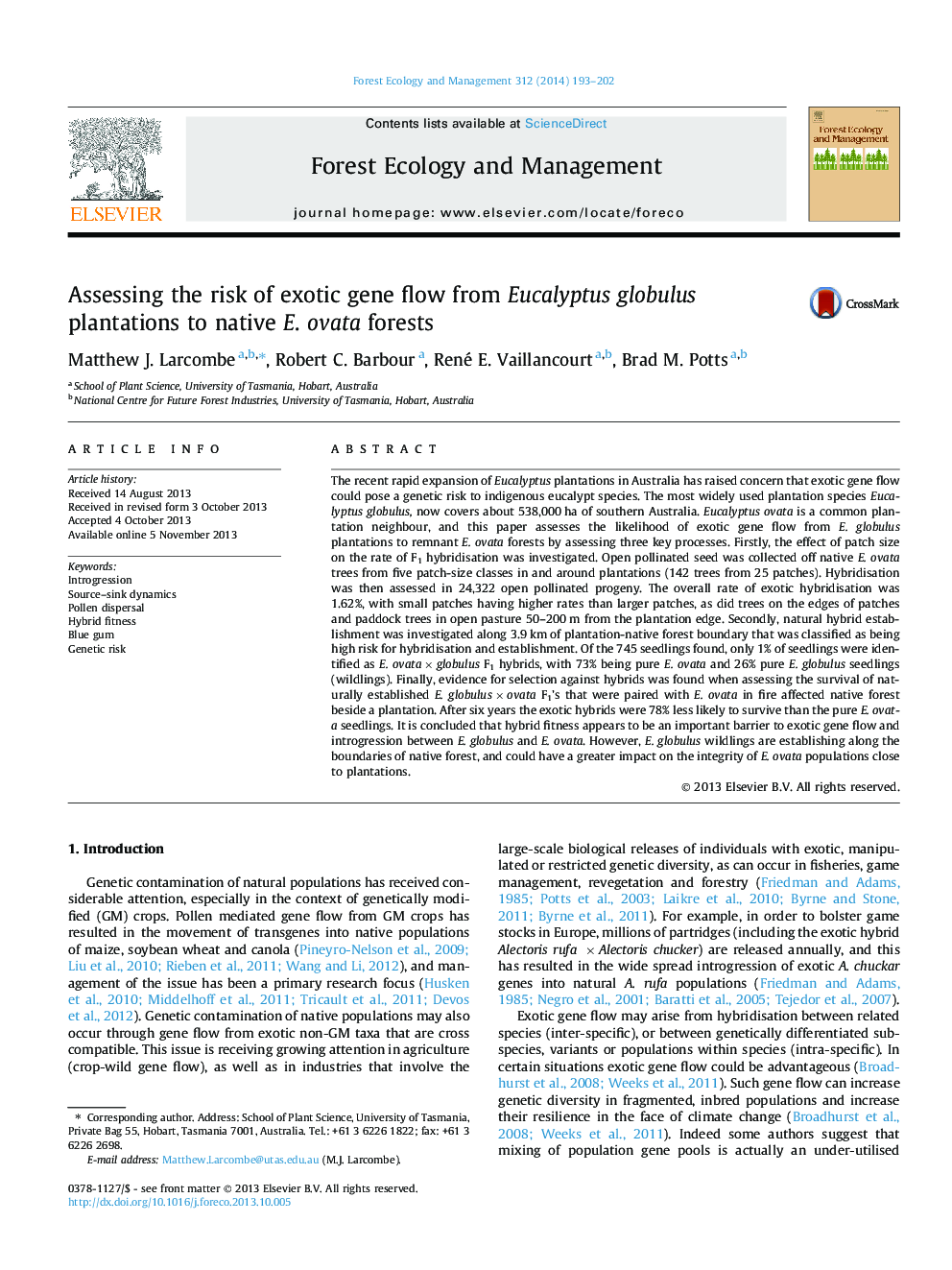| کد مقاله | کد نشریه | سال انتشار | مقاله انگلیسی | نسخه تمام متن |
|---|---|---|---|---|
| 86787 | 159211 | 2014 | 10 صفحه PDF | دانلود رایگان |

• Exotic gene flow from plantation E. globulus to native E. ovata forest is assessed.
• Small remnants and trees on edges are at the highest risk of cross-pollination.
• However, low hybrid fitness makes introgression unlikely.
• The spread of E. globulus seedling may pose a bigger threat than exotic gene flow.
The recent rapid expansion of Eucalyptus plantations in Australia has raised concern that exotic gene flow could pose a genetic risk to indigenous eucalypt species. The most widely used plantation species Eucalyptus globulus, now covers about 538,000 ha of southern Australia. Eucalyptus ovata is a common plantation neighbour, and this paper assesses the likelihood of exotic gene flow from E. globulus plantations to remnant E. ovata forests by assessing three key processes. Firstly, the effect of patch size on the rate of F1 hybridisation was investigated. Open pollinated seed was collected off native E. ovata trees from five patch-size classes in and around plantations (142 trees from 25 patches). Hybridisation was then assessed in 24,322 open pollinated progeny. The overall rate of exotic hybridisation was 1.62%, with small patches having higher rates than larger patches, as did trees on the edges of patches and paddock trees in open pasture 50–200 m from the plantation edge. Secondly, natural hybrid establishment was investigated along 3.9 km of plantation-native forest boundary that was classified as being high risk for hybridisation and establishment. Of the 745 seedlings found, only 1% of seedlings were identified as E. ovata × globulus F1 hybrids, with 73% being pure E. ovata and 26% pure E. globulus seedlings (wildlings). Finally, evidence for selection against hybrids was found when assessing the survival of naturally established E. globulus × ovata F1’s that were paired with E. ovata in fire affected native forest beside a plantation. After six years the exotic hybrids were 78% less likely to survive than the pure E. ovata seedlings. It is concluded that hybrid fitness appears to be an important barrier to exotic gene flow and introgression between E. globulus and E. ovata. However, E. globulus wildlings are establishing along the boundaries of native forest, and could have a greater impact on the integrity of E. ovata populations close to plantations.
Journal: Forest Ecology and Management - Volume 312, 15 January 2014, Pages 193–202